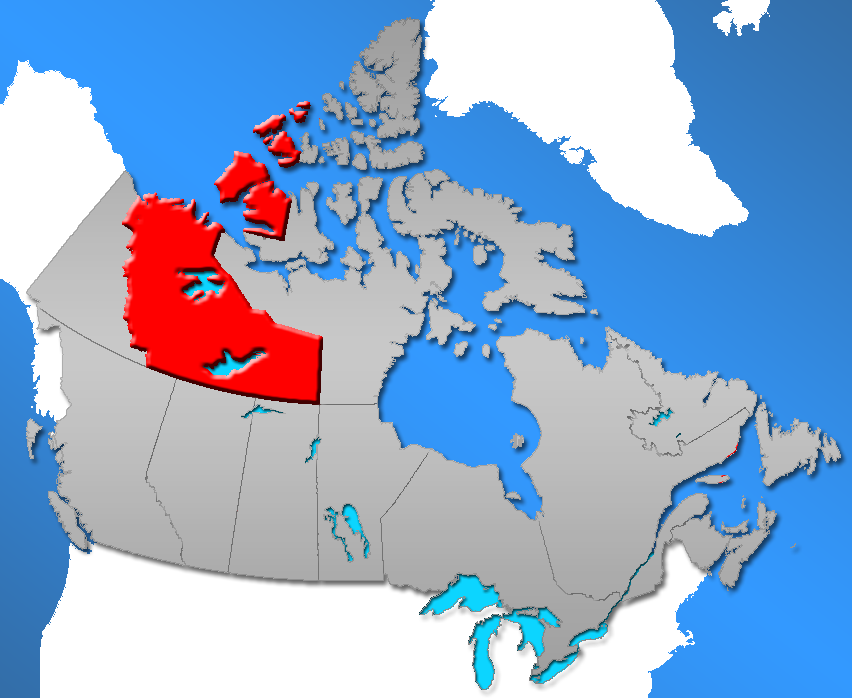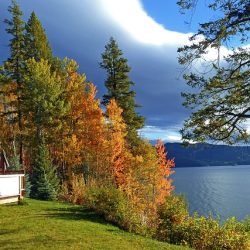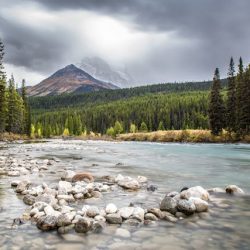
What It’s Like to Live in the North West for Newcomers
Canada’s Northwest Territories are located between Yukon and Nunavut on Canada’s west coast. It sits above the Arctic Circle. This means that in the summer, the sunlight is almost continuous while in the winter, the sun is hardly seen. The area is characterized by sweeping barrenlands, mountains, lakes, rivers and the Northern Lights. It is the most populous of the three territories and offers new immigrants a wonderful new home. The territory is known for its low unemployment, high median income, and excellent job opportunities as well as spectacular nature. The Northwest Territories are a great choice for adventurous immigrants who wish to learn about new cultures.
The Northwest Territories are governed directly by the federal government which differs from how the Canadian provinces are run. However, the territory does have representation in Canada’s federal parliament and an elected territorial legislative body. Approximately 43,000 people live in the territory and roughly half the population are First Nation (the Indigenous people of Canada). The capital of the territory is Yellowknife and half of the population lives here. Yellowknife has the highest rate of employment in Canada and the territory as a whole boasts the highest median income per household.
Learn about life in Canada’s Northwest Territories below:
Northwest Territories History and Culture:
Originally, the borders of the Northwest Territories was under the control of the Hudson Bay Company and stretched over a major portion of modern Canada. However, over time the territory was sold off and incorporated into other provinces. As the borders shifted, the Northwest Territories began to develop their own unique culture. Currently, the territory has evolved to have a distinctly northern and indigenous identity.
Many of the descendants of the original Inuit people keep their languages and cultural practices alive. The territory has eight official languages: French, English and six aboriginal languages. The traditional and native cultural practices have blended with Canadian culture to form a unique version in the territory.
Economy:
The region’s economy is booming due to the wealth of natural resources, including diamonds, gold, and natural gas, in the province. The diamond industry and diamond mining are one of the strongest growth areas for the territory. However, the oil and gas industry does not lag far behind. Additionally, the low population combined with larger natural resources means that the Northwest Territories has the highest per capita GDP in Canada. Yellowknife is growing rapidly and more service industry jobs are developing there. Much of the territory’s supply of fish and fur are purchased from the First Nation people.
Living in the Northwest Territories:
Due to the climate and geographic location of the territory, the region has a high cost of living. Due to its location above the arctic circle, heavy-duty clothing is necessary to stay warm in the winter and the cost of transportation is higher than in other parts of Canada. However, while it may be more expensive for transportation and daily goods the compensation is higher in the region to offset these costs. The average family income is around CAD 105,000. Additionally, to attract talented workers, many companies offer bonuses to new employees.
The territory’s cold climate means that buildings must be built that are capable of withstanding the natural environment. This means that the housing in the territory is typically more expensive than that of other provinces.
Education and Health Care:
The territory has a highly rated public education system that meets the educational needs of the territory’s children up to Grade 12. There are also apprenticeship programs and vocational training programs that can help prepare students to enter into careers. The school system serves both the indigenous students and non-indigenous students. For higher education, students can attend Aurora College which has campuses in Yellowknife, Fort Smith, and Inuvik.
Under Canadian law, all provinces and territories need to provide publicly funded, universal health care. Therefore, you can receive free and comprehensive health care in the Northwest Territories.
Major City- Yellowknife:
Yellowknife is the capital and urban center of the Northwest territories. Due to recent economic booms, the unemployment rates are at an all-time low. The government and diamond industry are the two major employers in Yellowknife. The city is known for its multicultural population.
How Do I Immigrate to the Northwest Territories?
Although the Northwest territory is not often the first region in Canada that people consider moving too, it does have a rich tradition of immigration. Immigrants to the Northwest Territories can expect a warm welcome to the territory and the ability to maintain their important cultural practices within the broader community. Most of the new immigrants settle in Yellowknife to take advantage of the city’s economic opportunities. Like other provinces in Canada, the Northwest Territories has a Provincial Nominee Program. The PNP serves as a way for immigrants to fast track their permanent resident applications in Canada. The program helps strengthen the territory by attracting skilled workers to the region.
Are you interested in living in the Northwest Territories?
If so, Contact VisaPlace today. All our cases are handled by competent and experienced immigration professionals who are affiliated with VisaPlace. These professionals consist of lawyers, licensed paralegals, and consultants who work for Niren and Associates an award-winning immigration firm that adheres to the highest standards of client service.
Have a Question related to your Immigration Needs?
Click here to fill out the FREE Immigration Assessment form below and get a response within 24 hours to see if you’re eligible.
The assessment form should take approximately 5-7 minutes to complete. We will get back to you within one business day to let you know if we are able to help.






